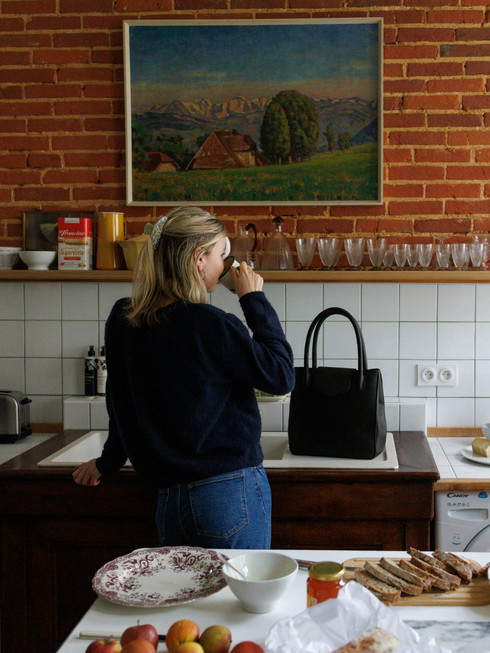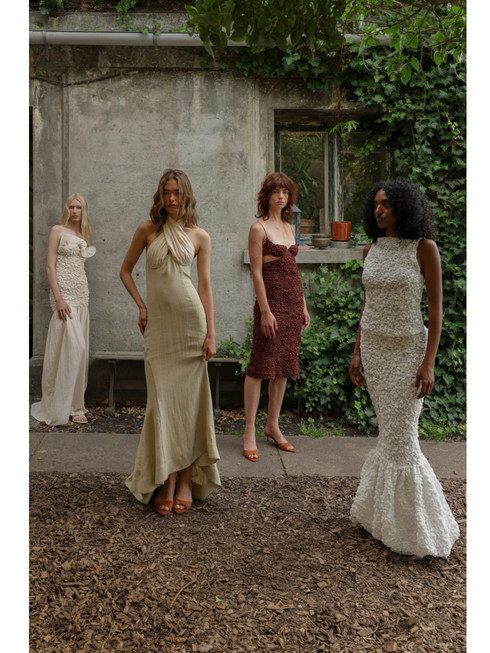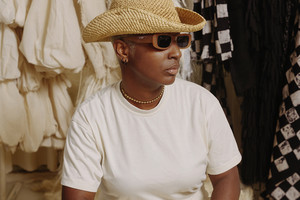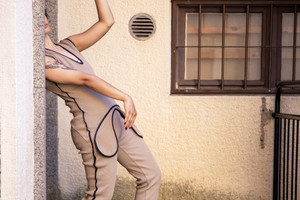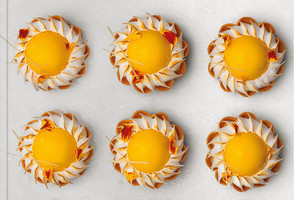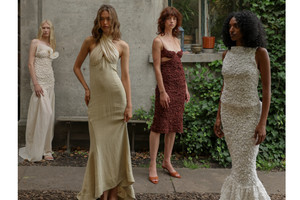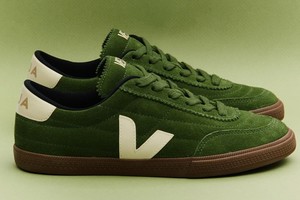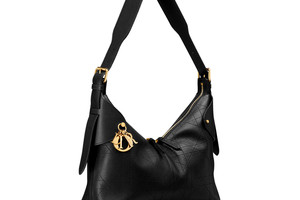HEIGS: The Art of Understated Luxury
Written by Ulrika LindqvistHEIGS was founded by Johanna van der Drift, with Daan van Luijn joining soon after as co-founder. Together, they bring a shared vision: to create timeless pieces with real meaning and purpose. Rooted in Swiss precision and shaped by a deep reverence for craftsmanship, their bags speak in subtleties, unbranded, intimate, and designed to grow with time. In this conversation, the duo reflects on heritage, restraint, and redefining what true luxury can be.
Ulrika Lindqvist: How long have you been working in accessory design, and what originally inspired you to pursue this career?
Johanna van der Drift : I’ve always been a designer at heart — whether it was hotel interiors, custom tableware, or television production. The idea for a bag came to me on a drive between Switzerland and France — a very specific stretch of road. I was chasing a form I hadn’t yet seen: something elegant, unbranded, deeply personal. Not long after, I met Eloise in Paris, a master leather artisan trained at Hermès and Louis Vuitton. Our connection was instant, and HEIGS started to take shape. It was less a career switch, more a continuation of everything I’d been building toward.
UL: What motivated you to start HEIGS?
JvdD: We wanted to create something lasting — a counterpoint to the speed and spectacle of fashion today. HEIGS is our answer to what we felt was missing: true luxury that doesn’t rely on noise, but on quality, intimacy, and care. Every part of HEIGS — from the untreated leather to the storytelling linings — is designed to grow with you. We believed there was a customer who wanted more meaning, less branding. And we were right.
UL: Can you share the story behind the name “HEIGS”?
JvdD: HEIGS stands for Heidi Goes Safari — a playful reimagining of the classic character Heidi. To us, Heidi isn’t a girl in the Alps. They’re a non-binary adventurer, rooted in nature but always exploring. It reflects our own story: I’m Swiss, Daan is Dutch; we live between cities and mountains, tradition and experimentation. HEIGS is about grounding and movement — heritage with curiosity.
UL: In your opinion, what are the most important features a bag should have?
Daan van Luijn: Quality. That might sound obvious, but it’s not always a given. A lot of luxury pricing doesn’t reflect the labor or craft behind the piece. Ours does. Each HEIGS bag takes two full weeks to make — by a single artisan. Over 150 steps, most of them by hand. That’s where the value sits. Not in trends. Not in logos. But in the time, care, and technique it takes to make something that actually lasts.
UL: Switzerland has long been known for its quality leather goods. Was entering this market intimidating?
JvdD: It wasn’t intimidating — it felt like home. I lived in Switzerland for over 20 years, and that culture of clarity, discipline, and craftsmanship is in my bones.
Entering that space wasn’t about competing, it was about contributing something thoughtful to it — something rooted in the same values but expressed in a new
way.
UL: How do you decide which materials to work with for your collections?
JvdD: I work from emotion. I search brocantes and flea markets across France and Switzerland, always looking for materials that carry story. We’ve used antique textiles, linings from ballet shoe ateliers in Paris, even pine and wildflowers.
UL: Do you have a favorite piece from your collection? What makes it special to you?
DvL: Probably the Beurre bag. It’s logo-free, white, undyed, uncoated. There’s something radical about how understated it is. No branding, just form. It represents the next chapter for us: going even deeper into restraint and refinement.
UL: What would you say are the three core values that define HEIGS?
JvdD & DvL:
Craftsmanship, Meaning over marketing, Intimacy over spectacle
How would you describe the typical Heigs customer?
JvdD & DvL: They notice quality, texture, stitching and the way a bag ages. They value quiet confidence. Many of them work in creative fields or care about design, but they’re not trying to show off.
UL: If you could design for anyone, who would be your dream client?
DvL: Lily-Rose Depp. There’s something so je ne sais quoi about her—a kind of effortless cool that feels inherited, maybe from her mother, Vanessa Paradis, who I’d also love to design for. They both have this rare, confident elegance.”
JvdD: Carolyn Bessette-Kennedy. I’ve always pictured her with the bag in her hand—even from the very beginning, four years ago. To me, she’s the ultimate in
understated sophistication: original, elegant, and timeless.
UL: Could you share a memorable moment from your journey with HEIGS so far?
DvL: For me, it was definitely the shoot in the Swiss Alps. That experience felt really foundational. The way the whole team came together—there was this shared energy, this collective vision—and what we created there felt so inherently ‘Heigs’. It was one of those moments where everything just clicked.
JvdD: I almost want to say the same, but for me, that place in the Alps is more than just a backdrop—it’s my homeland. That’s where my journey truly began. So
rather than a moment, it feels like an era. But if I had to choose one moment, it would be the day I held the first ‘En Suisse’ bag in my hands, after a year of working closely on the master with my leather maker. I’ll never forget it. It was exactly as it was meant to be.
UL: What are your plans and vision for the future of Heigs?
DvL: We’re not scaling in the traditional sense, but instead are working on smaller collaborations with brands and artists like Brigitte Tanaka and BillyNou, we’re focusing on pop-ups in Paris and will perhaps add a product category into the mix at some point. Right now our mission is to familiarise the world with our ethos and core collection.


